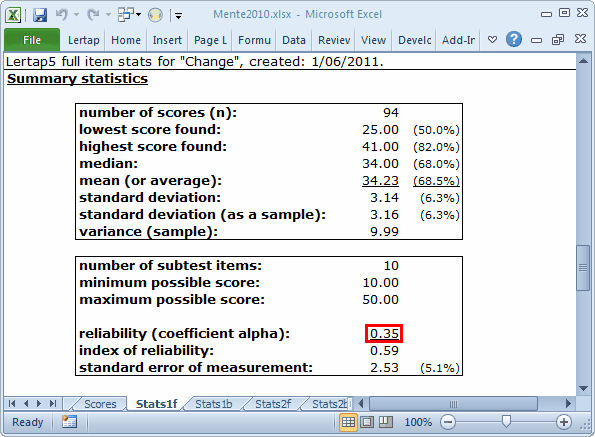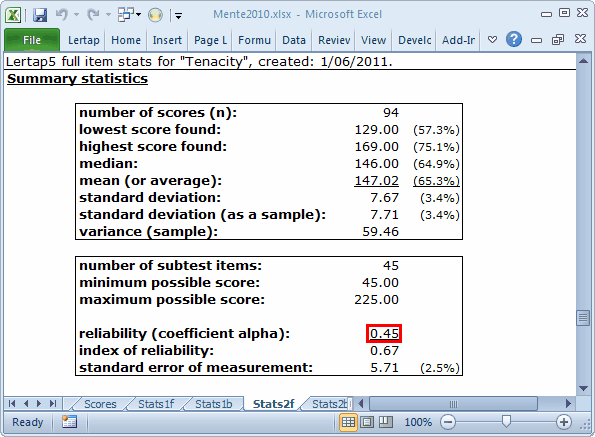Sample results, page 1
Data analysis was not a strength of the "mature-aged" doctoral student. His major adviser referred the student to the School's IT support group. Someone there had the student set up the Data and CCs sheets, and go through the steps required to get results with Lertap. This the student did while the adviser was away on a brief sabbatical.
2) Use the Interpret option on the Lertap tab.
3) Use the Elmillon option on the Lertap tab. |
The student was discouraged by what he found. The first subtest, "Change", had a reliability of just 0.35, as seen in the Stats1f report:

The second subtest was not much better:

It is commonly agreed that an affective scale should have a minimum alpha value of 0.70 to be useful; some authors suggest 0.80 as a working minimum.
Now, coefficient alpha is affected by a number of factors. One of them is test length. The first subtest in this example has only 10 items, but, according to the graduate student, affective scales in this area, "change", will often have a small number of items, yet will return alpha values much higher than 0.35.
Another factor which affects alpha relates to how the item responses are scored. Lertap makes some important assumptions in this regard.
It is assumed that affective items use "response codes" of 1 2 3 4 5. And, Lertap assumes that one point is to be awarded if someone selects the first "response code", two points for the second response code, ..., and five points for the fifth. It's possible to override these assumptions. For example, if other response codes are used, then an Res= declaration is made on the *sub line.
The graduate student, not at all an experienced data analyst, rode into Lertap with the CCs lines seen in the previous topic, implicitly accepting Lertap's default assumptions, and then reporting great dismay with the low alpha values found.
What he should have done, as a first step, was reverse the scoring of his negative items.
If the first item on the "tenacity" scale was I thrive when presented with a difficult task, and the second item was I feel stressed when faced with a challenge I know others find hard to master, then he should have reversed the way the second item was scored, giving five points for strongly disagree, and one for strongly agree. He wants a high "tenacity" score to correspond to those who are not adversely affected by a challenge.
The best way to determine which items should be reverse scored is to look each item in the face and decide it it's negatively phrased. Then a *pol line is used in the CCs sheet to accomplish the reverse scoring. Page ahead to see examples.
